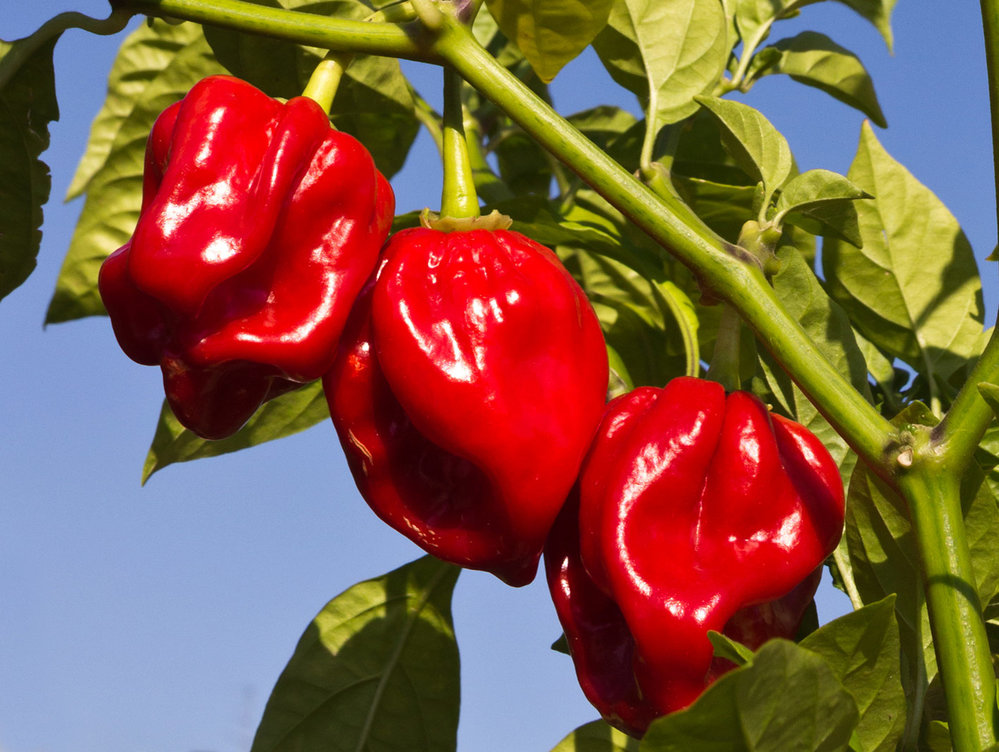Chilli seem to generate a mass following all over the world. Did you know right here in NZ, we have our own chilli eating competition and hot sauce festival?
Much like coriander, chilli also really polarises people. They either love it or won’t touch it. When it comes to chilli, I’m definitely in ‘team heat’ and love a good chilli in my cooking or even on its own.
Chilli heat is measured in Scoville Heat Units (SHU). The higher the rating the hotter the chilli. Trained testers dissolve dried chilli in alcohol and sugar water to measure its pungency. They then sample the mixture and dilute it until they can’t detect any more heat. Now I love chilli, but I’m not sure if I’d like this job.
The current champion to the ‘world’s hottest chilli’ goes to the Carolina reaper. It has a little grim reaper shaped tail and clocks in at 1,600,000 SKU. To give some perspective - the friendly jalapeno measures around 5,000 SKU.
Eating hot chilli is not for the faint hearted. People often find them to taste initially sweet, with an after burn that can last up to one hour in unsuspecting victims. And as a general rule, the smaller the pod the hotter the taste.
Chillies are a spring and summer plant. The first varieties ready right now at Awapuni are the jalapeno and red hot chilli. In November you’ll see the habanero red, bhut jolokia (ghost pepper) and the jalapeno red flame seedlings become available. You’ll have to wait until Christmas time to get your hands on a Carolina reaper plant.
Here's our list of chillies in order of hottest (starting with the hottest of the hot) - Carolina reaper, bhut jolokia, habanero red, red hot pepper, jalapeno red flame and jalapeno. Awapuni also have two mixed variety bundles of chilli this year (thanks to customer requests). The medium hot mix has a combination of the latter three chilli and in the hot mix you’ll find our hottest three chilli.
Planting wise, chilli are fairly easy to grow. They like a well-drained, sheltered and sunny spot in your garden that is very similar to where you’d plant your tomatoes, capsicums, basil and parsley. If you’ve got space near any bee-friendly plants like oregano and lavender, plant your chillies there to help with pollination.
Increase the quality of your soil by adding a good general fertiliser and come compost. Sheep pallets are also great to mix in with the compost, and act as a slow release fertiliser.
Chilli plants can get quite big, so plant your seedlings around 30 - 50cm apart. But they don’t actually need a lot of space, and grow well in pots as well. Water straight after planting, but after that they only need attending to every few days. Avoid wetting the leaves to prevent the spread of any diseases. And, once your chillies have developed, you might like to water them sparingly (depending on your taste buds) as less watering will make the fruit hotter.
In around two to three months from planting, you’ll start to see some spicy life. First flowers appear then, after being pollinated, they turn into fruit.
If you’re unsure whether your plants have been pollinated simply dab a small paint brush in each flower to help spread the pollen around.
Remember as with many fruit plants, cut your chillies rather than pulling them off. This encourages more fruit to grow. And what many people don’t realise is that a whole chilli freezes really well – lasting up to six months in the freezer. When you’re ready to cook with them, use an extra sharp knife and chop up your chilli whilst frozen. With fresh chilli about $2 each in the supermarket right now, it sure makes sense to freeze them.
Chillies are perennial plants meaning they can last a few seasons. Once your plant has finished fruiting, simply prune back by about a third, and remove any dead branches. They don’t cope well with frosts. If you did plant them in pots, move them to warmer ground for winter. Either indoors, or higher to the deck or under the eaves of your house.

